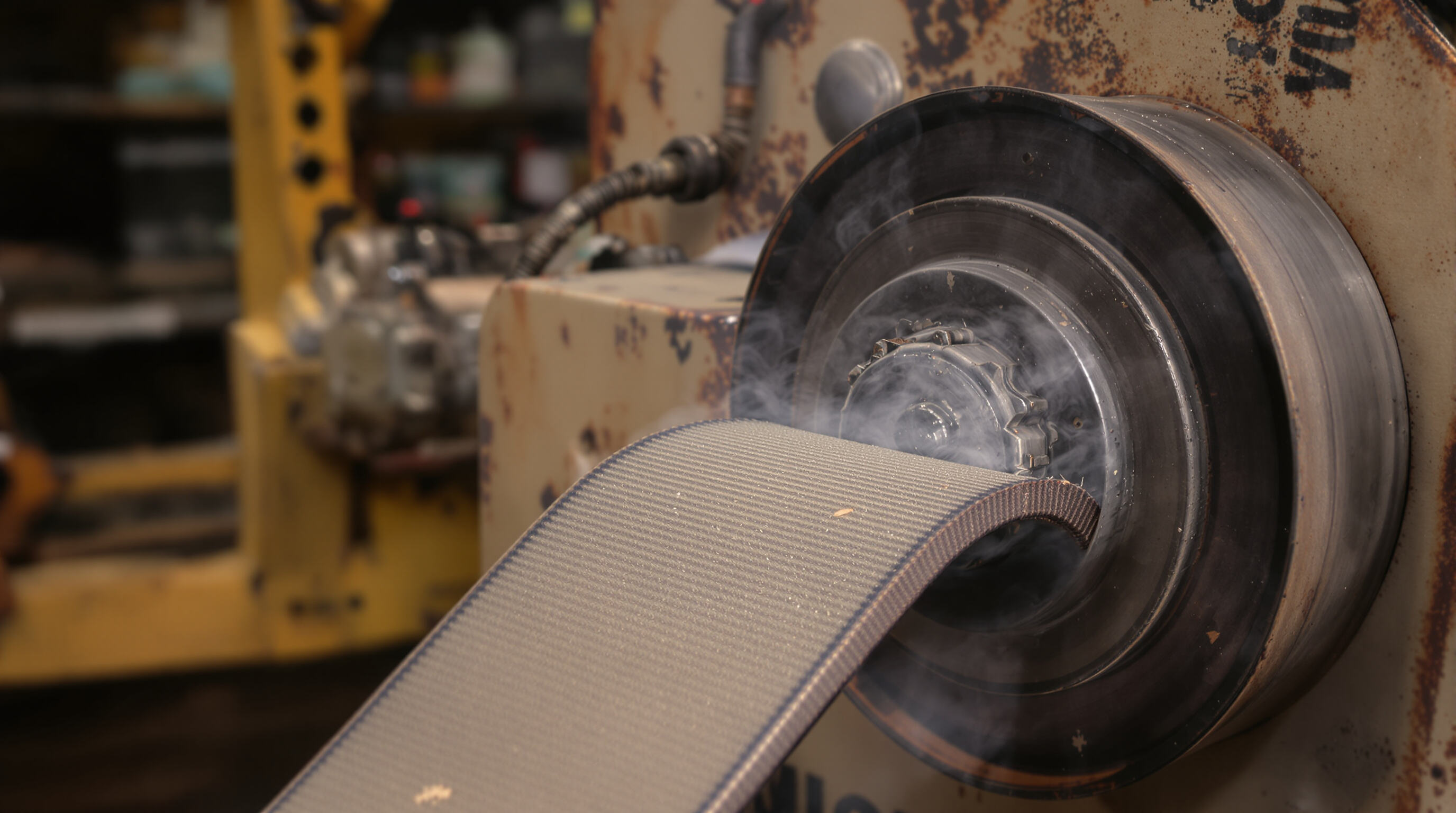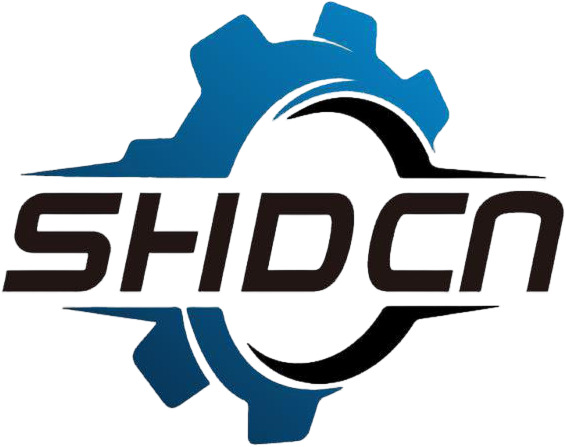Understanding the Most Frequent Wood Chipper Shredder Problems
Identifying Typical Symptoms of Wood Chipper Shredder Issues
When something goes wrong with machinery, operators usually spot problems from obvious clues like strange vibrations, uneven chip removal, or when the machine just cuts out on them suddenly. Hot engines are a real red flag too - according to the Outdoor Power Equipment Institute report from 2022, almost half (about 41%) of all early breakdowns start this way. And if fuel usage spikes without explanation, chances are good there's either dirt clogging up the air filters or those old spark plugs finally giving up the ghost. Then there are those grinding sounds that drive everyone crazy. Most times, that means blades aren't lined up right or bearings are wearing down. And when materials don't come out properly from the machine, look at the feed rollers first or check if something's gone wrong with the hydraulics system.
The Impact of Wear and Tear on Performance and Reliability
Running machines nonstop wears down important parts over time. For instance, blades tend to wear about 0.2 millimeters from their cutting edge after every 50 hours of operation according to OPEI research from 2022, which makes the chips produced less uniform in size. When drive belts stretch past 3% of their original length, they start to slip on the pulleys because they can't transfer as much torque anymore. Looking at equipment used for around 200 hours straight shows some serious issues developing. Hydraulic pumps end up losing about 30% of their pressure capability during this period, and engine compression falls by roughly 18%. These numbers matter because when these things happen, the machine becomes unreliable when trying to start it back up again.
Common Fault Trends Based on Industry Reports (2020–2023)
According to recent safety audits, blades are responsible for about half (47%) of all injuries related to wood chipper shredders as reported by the U.S. Consumer Product Safety Commission in their 2023 findings. Cold weather seems to be another trouble spot too, where hydraulic system problems account for roughly one fifth (22%) of equipment failures during winter months. There's been quite a jump in belt and pulley repair requests lately - we're talking around 63% more between 2021 and 2022 when machines had to operate below freezing temperatures regularly. Storage issues continue to plague manufacturers as well. About a third (34%) of warranty claims stem from poor storage conditions that speed up electrical component corrosion. And if that wasn't enough, sensors tend to fail at an alarming rate (up 89%) in areas near coastlines where salt air gets everywhere.
Engine and Fuel System Failures: Diagnosis and Solutions

Engine and fuel system issues account for 58% of wood chipper shredder downtime according to aggregate equipment repair data (Landscape Management Index 2021–2023). These failures often manifest as startup failures, irregular power output, or sudden shutdowns during heavy workloads.
Troubleshooting Engine Startup Problems in Wood Chipper Shredders
Hard starting typically traces to three culprits:
- Fuel contamination (water or debris in gasoline)
- Airflow restrictions from clogged filters
- Spark plug degradation after 100–150 operating hours
Always test with fresh fuel first—contaminated gasoline causes 23% of no-start scenarios in small-engine equipment. For diesel models, check glow plug functionality in temperatures below 50°F.
Clearing Fuel System Clogs and Fixing Carburetor Malfunctions
Persistent clogs signal failing fuel filters or microbial growth (diesel algae) in storage tanks. Use tiered diagnostics:
- Inspect sediment bowls for particulate buildup
- Verify fuel pump pressure meets manufacturer specs
- Clean carburetor jets with ultrasonic tools for stubborn blockages
Proper maintenance reduces carburetor overhaul frequency by 72% compared to reactive repairs.
Preventive Maintenance for Extended Engine Life
| Maintenance Task | Interval | Impact |
|---|---|---|
| Fuel filter replacement | Every 150 hours | Prevents 89% of injector clogs |
| Valve clearance check | Annually | Reduces compression loss by 41% |
| Fuel stabilizer use | For storage >30 days | Eliminates corrosion risk by 68% |
Rotate ethanol-free gasoline where possible, as ethanol attracts moisture that corrodes aluminum carburetor components.
Case Study: Reviving a Stalled Engine in a Commercial Wood Chipper
The city maintenance team's 25 horsepower chipper just couldn't hold its RPM when working hard. After some investigation, techs found the exhaust valves were completely clogged with carbon deposits running way over specifications at around 140%. They also spotted fuel lines that had started to break down and were letting air leak into the system. Once they cleaned out all that carbon buildup and installed new fuel lines, the machine came back to life with nearly full power restored. Looking at the oil samples taken after repairs, there was definitely improvement too – engine wear particles dropped by about 22% once those combustion problems got fixed up properly.
Blade Dullness, Feed Jams, and Cutting Efficiency
How Blade Wear Reduces Wood Chipper Shredder Efficiency
When blades get dull, wood chipper shredders have to put in about 20 to 40 percent more effort than normal. This means higher electricity bills and motors that wear out faster over time. According to a recent study published in Food Processing magazine back in 2024, facilities running heavy-duty operations saw their productivity drop around 15% when blades were not sharp enough. The problem? Things just don't get processed properly and machines keep stopping unexpectedly. Many operators miss these warning signals until it's too late. Look out for things like rough edged wood pieces coming through or strange vibrations during operation. These are actually pretty good clues that the blades aren't holding their proper cutting angle anymore. Most standard models should be working at an angle somewhere between 12 degrees and 15 degrees when everything is functioning correctly.
Safe Methods to Clear Feed Jams and Resume Operation
When jams occur:
- Power down immediately and wait for all components to stop
- Use a hooked pry bar to reverse-feed obstructions—never push debris forward
- Inspect discharge chutes for residual buildup before restarting
Industry reports show 78% of hydraulic system failures originate from operators forcing jammed materials. Always verify cutter wheel freedom of movement after clearing blockages.
Best Practices for Sharpening and Replacing Blades
Sharpening frequency depends on material hardness:
- Softwoods: Every 50–70 operating hours
- Hardwoods/construction debris: Every 30–50 hours
Use a protractor to maintain original bevel angles during sharpening (±2° tolerance). For replacement, prioritize carbide-tipped blades—they last 3x longer than standard steel in abrasive conditions. Proper blade maintenance reduces injury risks by 52% compared to using compromised cutting edges (NIOSH).
Balancing High-Speed Chipping With Blade Durability
Reduce feed rates by 15–20% when processing knotty or frozen wood to prevent micro-fractures in blade edges. This preserves cutting efficiency while extending service intervals by 30–45 days in typical use cases. Recent blade durability research confirms that alternating between high-torque and high-speed modes distributes wear more evenly across cutting surfaces.
Belt, Pulley, and Hydraulic System Malfunctions
Recognizing Belt Slippage and Pulley Misalignment Signs

When belts start slipping, operators usually notice either uneven chip production rates or that telltale smell of burning rubber hanging around the machine area. Pulleys that aren't aligned properly tend to wear down belts on just one side over time. According to recent industry reports from 2023, roughly two thirds of all unplanned shredder shutdowns actually come down to these kinds of belt and pulley problems. Keep ears open for those sharp squeals coming from machines too. That kind of noise typically means either the belt isn't tight enough or there's some angle misalignment going on beyond what's acceptable (about half a degree is where things get problematic). Most maintenance teams have learned to treat these warning signs seriously since fixing them early saves hours of lost productivity later on.
Replacing Worn Belts and Calibrating Tension Correctly
Replace belts showing cracks or glazing immediately. For tension calibration:
- Measure deflection at the belt’s midpoint (3/8" ideal for most industrial shredders)
- Use laser alignment tools to verify pulley parallelism
- Adjust tracking weekly in high-dust environments
Follow OEM torque specifications when tightening retention bolts to prevent premature bearing failure.
Detecting Hydraulic Leaks and Pressure Drops in Industrial Models
Hydraulic leaks typically occur at hose fittings (38% of cases) and cylinder seals (25%, Noria Corporation 2024). Inspect for:
| Symptom | Diagnostic Tool | Acceptable Threshold |
|---|---|---|
| Pressure loss | Inline gauge | <10% from baseline |
| Fluid trails | UV dye kit | Zero visible leaks |
| Pump cavitation | Stethoscope | No metallic knocking |
Maintaining Hydraulic Fluid Quality and Preventing Contamination
Contaminated fluid causes 83% of hydraulic failures in shredders (ICML 2023). Implement:
- Bi-annual fluid analysis for viscosity and particulate counts
- 5-micron breather caps on reservoirs
- Quarterly flushing of cooler lines
- Dry-break couplings when changing attachments
These protocols reduce component replacement costs by 41% in 3-hr/day operation scenarios.
Electrical Faults and Smart Diagnostic Solutions
Diagnosing Sensor Errors and Electrical Failures in Modern Units
Faulty sensors account for 48% of electrical failures in wood chipper shredders (2023 industrial maintenance study). Common symptoms include intermittent power loss, unresponsive controls, and phantom error codes. Use multimeter voltage checks to identify corroded connectors or damaged wiring harnesses—particularly in models with exposed junction boxes.
Addressing Wiring Corrosion in Outdoor Operating Environments
Moisture intrusion causes 7x faster corrosion in electrical components compared to indoor equipment (2024 Heavy Machinery Safety Report). Apply dielectric grease to all connectors and install UV-resistant conduit on exposed wires. For severe corrosion:
- Disconnect battery/power source
- Remove oxidation with fiberglass brushes
- Seal repairs with waterproof shrink tubing
Leveraging IoT and Smart Monitoring for Predictive Maintenance
Cloud-connected sensors now prevent 62% of critical failures in wood chippers by tracking:
| Parameter | Normal Range | Alert Threshold |
|---|---|---|
| Vibration | < 4.2 mm/s² | ≥ 5.8 mm/s² |
| Motor Temp | < 165°F | ≥ 185°F |
| Hydraulic Pressure | 2,000–2,500 PSI | <1,800 PSI or >2,700 PSI |
Recent advancements in machine learning-driven diagnostics enable systems to predict bearing failures 8–12 operating hours before catastrophic breakdowns. Integrate these smart tools with your maintenance software to schedule repairs during planned downtime.
FAQ Section
What is the most common cause of wood chipper shredder breakdowns?
Engine and fuel system failures account for 58% of wood chipper shredder downtime.
How often should blades be sharpened on a wood chipper shredder?
Blades should be sharpened every 50-70 hours for softwoods and every 30-50 hours for hardwoods/construction debris.
What measures can be taken to prevent hydraulic leaks?
Inspect hose fittings and cylinder seals regularly for leaks, ensure proper fluid quality through bi-annual analysis, and use dry-break couplings when changing attachments to prevent contamination.
How can electrical faults caused by sensor errors be diagnosed?
Multimeter voltage checks can identify corroded connectors or damaged wiring harnesses.
What is the impact of dull blades on wood chipper shredder efficiency?
Dull blades increase the effort required by 20-40%, leading to higher electricity bills and faster motor wear.
Table of Contents
- Understanding the Most Frequent Wood Chipper Shredder Problems
- Engine and Fuel System Failures: Diagnosis and Solutions
- Blade Dullness, Feed Jams, and Cutting Efficiency
- Belt, Pulley, and Hydraulic System Malfunctions
- Recognizing Belt Slippage and Pulley Misalignment Signs
- Replacing Worn Belts and Calibrating Tension Correctly
- Detecting Hydraulic Leaks and Pressure Drops in Industrial Models
- Maintaining Hydraulic Fluid Quality and Preventing Contamination
- Electrical Faults and Smart Diagnostic Solutions
-
FAQ Section
- What is the most common cause of wood chipper shredder breakdowns?
- How often should blades be sharpened on a wood chipper shredder?
- What measures can be taken to prevent hydraulic leaks?
- How can electrical faults caused by sensor errors be diagnosed?
- What is the impact of dull blades on wood chipper shredder efficiency?

